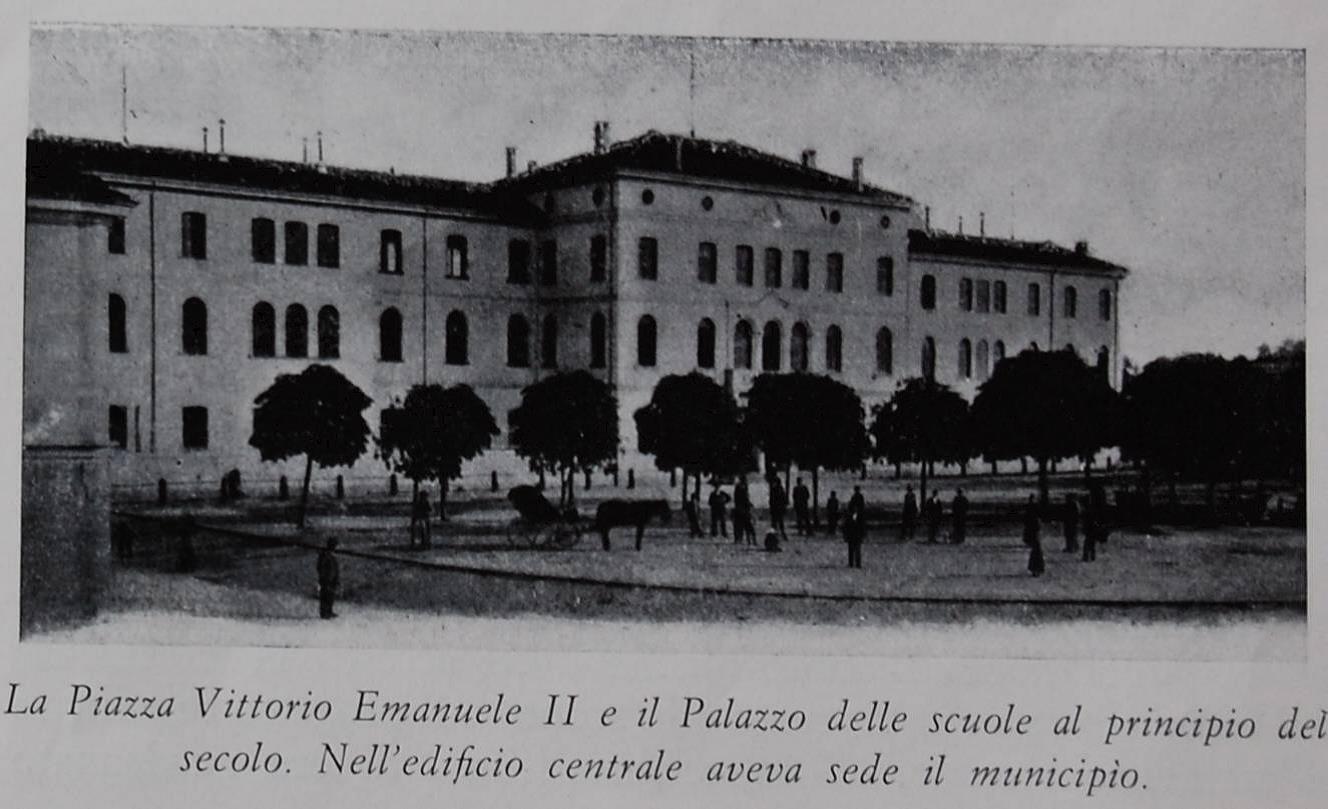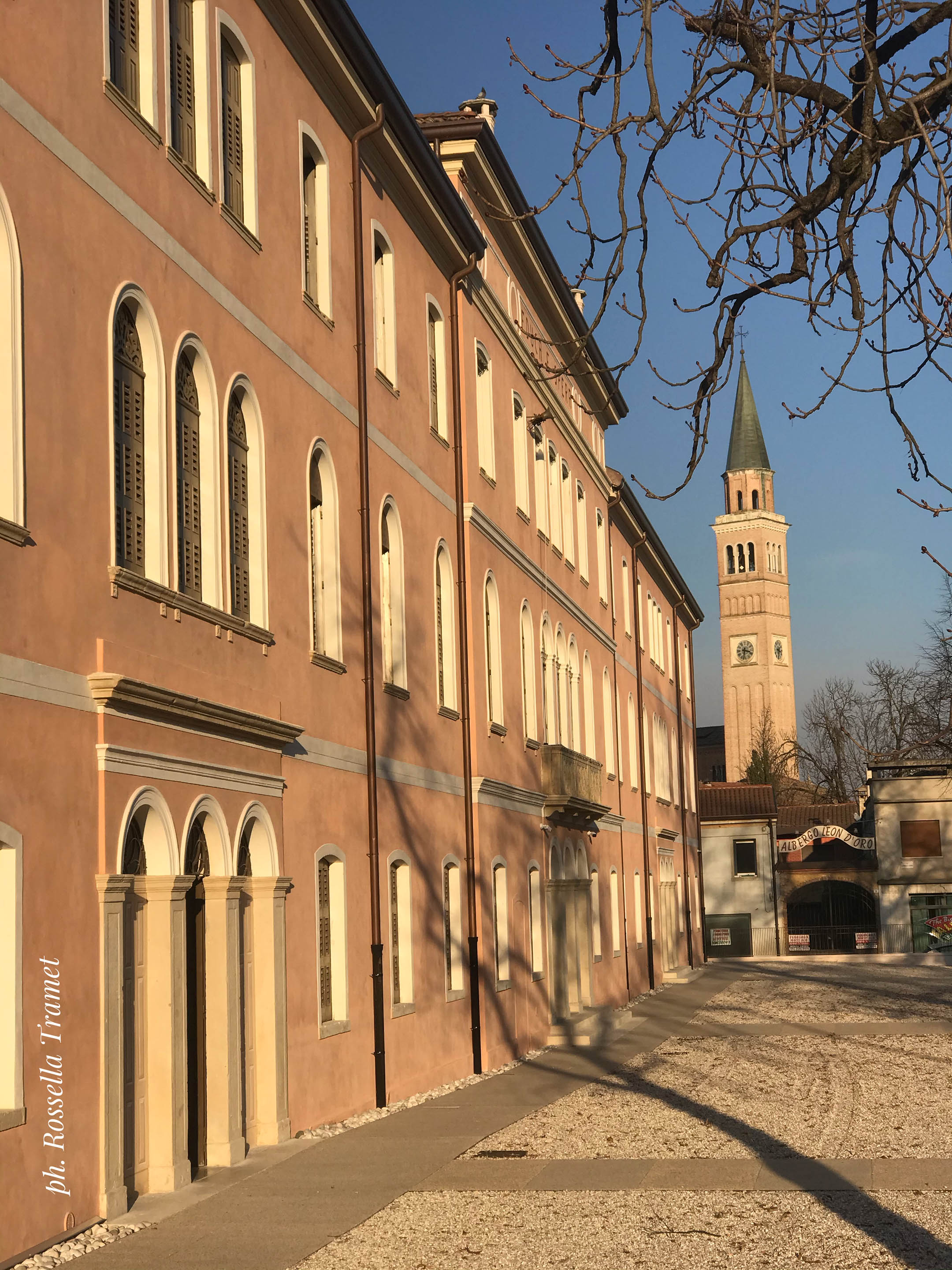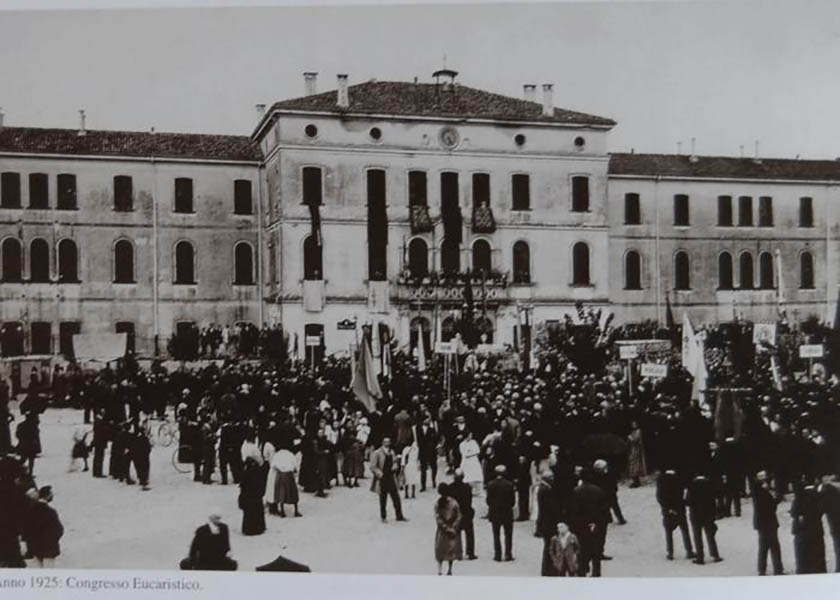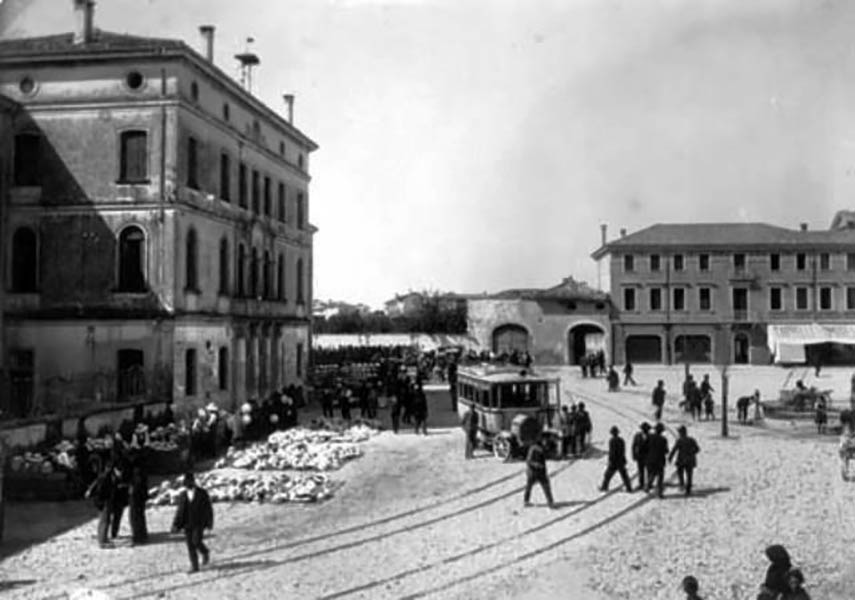Municipio - Palazzo Vaccari
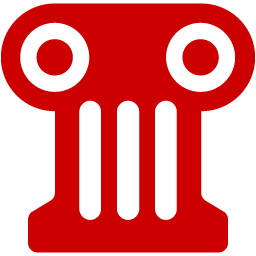 Monumenti
Monumenti
Descrizione
Il grande edificio che si affaccia sulla piazza principale di Pieve, da poco ristrutturato per potervi ospitare il nuovo municipio e "il polo del gusto", fu ultimato nel 1876 su progetto dell'Ing. Ferdinando Chisini.
I lavori furono eseguiti dall’impresa locale Narduzzo Busolli. Fu nel tempo sia sede scolastica che sede municipale (fino agli anni 1950 e ora di nuovo ai giorni nostri). Il fabbricato ospitava all'inizio il corso completo di istruzione elementare inferiore e superiore, l'asilo comunale e la scuola festiva di disegno per gli artieri.
Quest'ultima, nata nel 1860 ebbe tra i primi maestri un Ceschin da Soligo, ebanista, autore con il solighettese Davide Fontana, degli arredi della nuova chiesa di Solighetto. Maestri della scuola furono Andreoli, insigne calligrafo, Corromer, il pittore e decoratore Andrea Zanzotto e lo scultore e decoratore Paolo Possamai.
La scuola "festiva" ( in seguito anche "serale") di arti applicate e mestieri, era aperta ad allievi provenienti da tutto il Quartier del Piave, prevedeva un programma specifico con elementi di geometria piana, ornato e riproduzione su scala di oggetti e riproduzioni varie Lo scopo era fornire agli artigiani le nozioni tecniche essenziali e le basi di cultura tecnica e generale, per svolgere al meglio il loro mestiere. La scuola registrò un notevole sviluppo, in una zona in cui l'artigianato del legno, del giunco, del ferro battuto e del marmo, avevano acquisito via via maggiore importanza. Interrotta negli anni dell' invasione ebbe successivamente altri insegnanti di prestigio come il prof. Giovanni Zanzotto, Attilio ed Emilio Fontana, Carlo Conte, Innocente Gerlin.
Dopo la seconda guerra mondiale, sotto la presidenza del comm. Baseggio e con Giovanni Zanzotto, la scuola riaprì fino alla definitiva chiusura nel 1966. Nella scuola si formarono molti artigiani che ebbero un ruolo determinante nello sviluppo industriale degli anni Sessanta, di tutto il Quartier del Piave.
The big building facing Pieve’s main square - recently renewed in order to accommodate the new town hall and the ‘Polo Del Gusto’ (centre of flavor) - was ultimate in 1876 on the project of engineer Ferdinando Chisini. The works were carried out by local firm Narduzzo Busolli. In its time, it was site of a school and of the town hall (until the 50s and nowadays again). The building accommodated first the complete course of superior and inferior elementary school, the territorial primary school and the drawing festive school for artists. The latter, born in 1860, had among the first teachers a certain Cecchin from Soligo, cabinet maker, author with Davide Fontana - always from Soligo - of the furniture of the new church of Solighetto. Were also teachers in the school Andreoli, distinguished calligrapher, Corromer, painter and decorator Andrea Zanzotto and sculptor and decorator Paolo Possamai.
The ‘festive’ school (later also in the evening) of applied arts and crafts, was open to students coming from the whole Piave District. It had a specific program with elements of plain geometry, scale re production of objects and various re productions. The aim was providing the artisans with the essential technical notions and the cultural technical and general basilar information, in order to work properly as well as possible. The school saw a remarkable development, in a zone where the wood, reed, wrought iron and marble processing had gained more and more importance. This was interrupted during the invasion, but successively had other prestigious teacher, such as Giovanni Zanzotto, Attilio and Emilio Fontana, Carlo Conte, Innocente Gerlin. After WWII, under the presidency of commander Baseggio and with Giovanni Zanzotto, the school reopened until the definitive closure in 1966. Many artisans formed in the school, who had a determinant role in the industrial evolution of the 60s in the whole Piave District.
Das große Gebäude am Hauptplatz von Pieve wurde kürzlich renoviert und ist nun Sitz des neuen Rathauses und des „Polo del gusto“ (Pol des Geschmacks). Das Bauwerk wurde nach einem Entwurf des Ingenieurs Ferdinando Chisini errichtet und 1876 fertiggestellt.
Die Arbeiten wurden von der einheimischen Firma Narduzzo Busolli ausgeführt. Im Laufe der Jahre beherbergte das Gebäude sowohl eine Schule als auch das Rathaus (bis in die 50er Jahre und heute wieder). Zu Beginn waren in dem Gebäude sämtliche Klassen der Grundschule und der weiterführenden Schulen, der städtische Kindergarten und die „Scuola di Disegno per Artieri“, eine Zeichenschule für Handwerker, untergebracht.
Diese Lehranstalt wurde 1860 gegründet und hatte unter ihren ersten Lehrern einen Kunsttischler namens Ceschin aus Soligo, der zusammen mit Davide Fontana aus Solighetto das Mobiliar der neuen Kirche von Solighetto herstellte. Weitere Meister, die an der Schule lehrten, waren Andreoli, ein angesehener Kalligraph, Corromer, der Maler und Dekorateur Andrea Zanzotto und der Bildhauer und Dekorateur Paolo Possamai.
Die „Sonntags-“, später auch „Abendschule für Angewandte Künste und Handwerk stand allen Schülern aus dem Quartier del Piave offen und bot ein breit gefächertes Programm mit Themen aus der Geometrie, Ornamentik und der maßstabsgetreuen Nachbildung verschiedener Objekte und Reproduktionen. Dahinter stand die Absicht, den Handwerkern wesentliche Kenntnisse der Technik und die Grundlagen der technischen und allgemeinen Kultur zu vermitteln, damit sie ihre Arbeit bestmöglich ausführen konnten. Die Schule verzeichnete in einem Gebiet, in dem das Handwerk mit den Materialien Holz, Binsen, Schmiedeeisen und Marmor allmählich an Bedeutung gewonnen hatte, beträchtlichen Erfolg. Nach dem Krieg, während dessen die Schule geschlossen blieb, konnte sie weitere angesehene Lehrer wie Prof. Giovanni Zanzotto, Attilio und Emilio Fontana, Carlo Conte und Innocente Gerlin vorweisen.
Nach dem Zweiten Weltkrieg wurde die Schule unter der Präsidentschaft von Commendatore Baseggio und mit Giovanni Zanzotto bis zur endgültigen Schließung im Jahr 1966 wiedereröffnet. In der Schule wurden viele Handwerker ausgebildet, die in den Sechziger Jahren eine entscheidende Rolle bei der industriellen Entwicklung des gesamten Quartier del Piave spielten.
